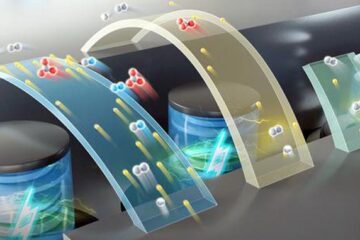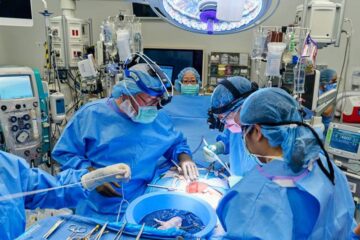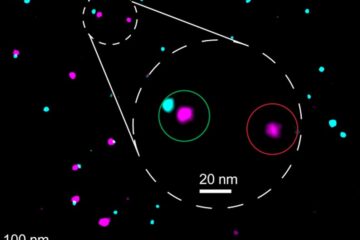Bacterial 'switch gene' regulates how oceans emit sulfur into atmosphere

Scientists have discovered a bacterial “switch gene” in two groups of microscopic plankton common in the oceans. The gene helps determine whether certain marine plankton convert a sulfur compound to one that rises into the atmosphere, where it can affect the earth's temperature, or remain in the sea, where it can be used as a nutrient.
“This new gene offers a powerful tool to study the question of how these plankton are involved with sulfur exchange between the ocean and atmosphere,” said Mary Ann Moran, marine microbial ecologist at the University of Georgia. Moran and her colleagues published their findings in the Oct. 26, 2006, issue of the journal Science.
Much of the sulfur in the atmosphere comes from the surface of oceans, from a compound called dimethlysulfide, or DMS. Marine plankton control how much sulfur rises into the atmosphere by converting a compound called DMSP, or dimethylsulfoniopropionate, to DMS or to sulfur compounds that are not climatically active. Moran and her team discovered a gene that controls whether or not these sea drifters create DMS that rises into the air.
“Isolating and discovering a novel, keystone bacterium from the ocean first, and then sequencing its genome enabled this team to find the genes involved in the DMSP cycle,” said Matthew Kane, program director in the National Science Foundation (NSF) Division of Molecular and Cellular Biosciences, which supported the research. “The research has revealed the previously hidden role that marine microbes play in the global sulfur cycle.”
The researchers discovered that microscopic plankton that fall under the Roseobacter and SAR11 organism groups are the primary plankton involved in directing DMSP away from forming DMS, and thus making sulfur unavailable to atmospheric processes.
Dramatic advances in understanding how these plankton work have developed in the past few years with the availability of new genomic data. The scientists searched genome fragments of these plankton, looking for specific gene sequences that would show how the plankton use sulfur compounds.
“This breakthrough in the microbial physiology of DMSP metabolism opens the door to understanding the biology and ecology of this globally important process,” said William Whitman, a microbiologist at the University of Georgia and co-author of the Science paper. The discovery of a bacterial gene switch in these two groups of plankton will open new areas of research, since DMSP synthesis may account for almost all marine-created atmospheric sulfur. The findings also expand knowledge of how these marine organisms are involved in the routing of carbon and sulfur into the microbial food web.
Media Contact
More Information:
http://www.nsf.govAll latest news from the category: Life Sciences and Chemistry
Articles and reports from the Life Sciences and chemistry area deal with applied and basic research into modern biology, chemistry and human medicine.
Valuable information can be found on a range of life sciences fields including bacteriology, biochemistry, bionics, bioinformatics, biophysics, biotechnology, genetics, geobotany, human biology, marine biology, microbiology, molecular biology, cellular biology, zoology, bioinorganic chemistry, microchemistry and environmental chemistry.
Newest articles

High-energy-density aqueous battery based on halogen multi-electron transfer
Traditional non-aqueous lithium-ion batteries have a high energy density, but their safety is compromised due to the flammable organic electrolytes they utilize. Aqueous batteries use water as the solvent for…

First-ever combined heart pump and pig kidney transplant
…gives new hope to patient with terminal illness. Surgeons at NYU Langone Health performed the first-ever combined mechanical heart pump and gene-edited pig kidney transplant surgery in a 54-year-old woman…

Biophysics: Testing how well biomarkers work
LMU researchers have developed a method to determine how reliably target proteins can be labeled using super-resolution fluorescence microscopy. Modern microscopy techniques make it possible to examine the inner workings…





















